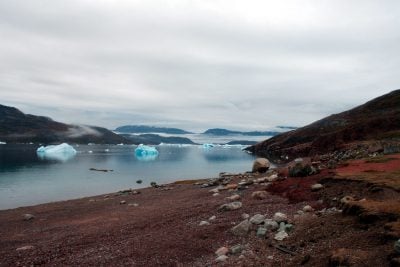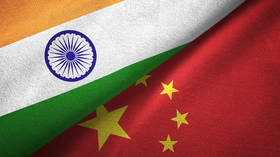Protect the Arctic Region: Already Threatened Arctic Ecology Can be Devastated Further by Rapid Militarization

All Global Research articles can be read in 51 languages by activating the Translate Website button below the author’s name (only available in desktop version).
To receive Global Research’s Daily Newsletter (selected articles), click here.
Click the share button above to email/forward this article to your friends and colleagues. Follow us on Instagram and Twitter and subscribe to our Telegram Channel. Feel free to repost and share widely Global Research articles.
Global Research Referral Drive: Our Readers Are Our Lifeline
***
The Arctic region is warming at twice the global rate, leading to rapid melting of ice–some have even predicted ice-free summers by year 2034. This has brought unprecedented threats to various species of the region including the polar bear. Some species are threatened by the shrinking, even vanishing habitats where they have always lived safely and happily, some are threatened by the fast reducing access to their staple food, while some are threatened by weather extremes.
Despite this there is still relentless march to exploit the vast natural resources of the region, including oil, natural gas, rare earth and other minerals. Partly due to the huge natural resources and partly due to strategic and geo-political reasons, big power confrontation in this remote region can also increase.
In fact melting of ice increases the possibility of higher exploitation of natural resources as well as carving out of new maritime routes with all its strategic and commercial implications. Another complication is the increasing confrontational situation of NATO and Russia which may get extended, tragically, even to the Arctic region with very heavy costs to ecology and to native people.
The Arctic region is spread over 8 countries, 7 of which are NATO members. These are USA, Canada, Iceland, Denmark (Greenland), Norway, Sweden and Finland. The eighth country is Russia.
While Russia has a well-established military presence here, this is largely defensive as Russia has important strategic interests to protect here spread over a vast area. With Finland and Sweden recently becoming NATO members and with the situation in Ukraine not working out to be favorable to NATO plans, the USA may just be tempted to try to create difficulties for Russia in this region. Russia may respond by giving more opportunities to China to acquire a presence here. One move by one side may lead to another move by the other side and very soon the situation may become much more tense and risky.
This should be avoided in the interests of world peace as well as the considerations of protecting Arctic ecology. Not just actual conflict but even large-scale military exercises may prove to be quite harmful for Arctic ecology. Under the Nordic Response 2024 exercise in Norway in March, as many as about 20,000 soldiers from 13 NATO member countries were gathered in the Arctic region with frigates, submarines and other vessels, and over 100 aircrafts. This is likely to ultimately increase to about 90,000 soldiers.
A high-risk situation already exists here in which climate change and global warming first create conditions in which exploitation of natural resources and militarization are likely to increase more, and this trend in turn greatly increases the possibilities of global warming further, apart from destruction of local environment and life-species in more direct ways as well. All this should be avoided. With due caution and by ensuring there is no undue suspicion of each other’s intentions, conflict in this region can be avoided as both sides also recognize hopefully how costly in economic as well as in ecological terms, above all of course in terms of loss of human lives, conflict in such a region is likely to prove. Special mechanisms should be in place to minimize militarization and the possibility of any conflict breaking out here.
Further we look here at the various high risks that have already occurred in recent times in this region in more details in the context of a part of this region—Greenland. Very high rate of ice melting has been reported here—even melting of as much as 18 billion tons of ice sheets in just 3 days of mid-July in Greenland. Very frightening estimates have been presented of the extent of rise in sea level if melting on such a scale continues.
It was reported that Donald Trump made an offer of a payment to Denmark to acquire control over Greenland. This was considered an atrocious offer by most people and for good reason was not even considered seriously by the Denmark government. This even led to the cancellation of a planned visit of President Trump to Denmark. Although Denmark controls the foreign policy and security of this vast island, Greenland has been moving towards autonomy and self-government.
However it is not difficult to understand why the USA has been keen to acquire Greenland. In fact even President Truman made an offer in 1946 to purchase Greenland for 100 million dollars. This offer was refused, but Denmark later succumbed to USA pressure to set up military bases in Greenland, including a nuclear powered station Camp Century.

Camp Century Trench Construction (From the Public Domain)
With its strategic location close to Russia as well as the USA, Greenland remains of great military interest to the USA. This is a factor which has acquired more significance recently with the accentuation of big power rivalries.
In addition, Greenland is a source of precious mineral resources, including gold and rare earths. The opening up of these rare earth deposits to China is something which the Western powers will like to stop, given the fact that China already has high levels of control over rare earths.
Greenland has a population of just 57,000 people in its vast territory of 836,330 sq. miles and has the lowest population density in the entire world. This Arctic region is highly sensitive from the ecological point of view, a sensitivity which has increased further in times of climate change. As the ice sheets which cover vast areas melt under the influence of global warming, buried carbon deposits will be released and sea levels will rise. The region’s unique biodiversity includes polar bears and seals will be badly threatened.
Hence there is a strong case for the entire Greenland to be administered by the United Nations as a zone of neutrality, peace and environment protection. Under such an arrangement, ecologically protective livelihoods and basic facilities will be ensured by a UN-administered program, which will treat the entire island as an area of ecological protection where any exploitation of natural resources will be strictly controlled and no military installation will be allowed. In addition there will be a very careful well-planned effort for undoing the damage already done.
As the snow melts with global warming, the remains of what was once a nuclear-powered military station (Camp Century) of the USA will open up, requiring a very careful clean-up effort. An even bigger danger exists in the form a nuclear weapon which was lost here in a bomber airplane accident in 1968. This was the peak of the cold war period when some USA bomber planes carrying nuclear weapons used to be in the air all the time and the Thule military base in Greenland was a special place for these operations due to the relative proximity of Russian targets from here. The airplane accident took place when the USA bomber containing nuclear weapons was approaching this military base in Greenland. The USA had obtained the permission of the Denmark government to set up this military base but it is not at all certain whether the Denmark government, let alone the local communities, had been informed about the transactions here involving the transport of nuclear weapons.

An aerial view of Thule Air Base in 1989 (From the Public Domain)
Actually the plane contained four nuclear weapons but three could be recovered. In the salvage operation in 1968 thousands of pieces of debris as well as millions of tons of ice, suspected to contain radioactive debris, were collected. Still one weapon could not be found despite the huge research effort. Workers employed in the clean-up work suffered from cancer later and have been claiming compensations till recently.
It is by now widely accepted that in this accident as many as four nuclear weapons were endangered, three were recovered more or less intact but one hydrogen bomb was never recovered. One aspect of a UN-administrated protective future should be to remain on constant alert for any tell-tale signs of damage from this so that a potential catastrophic event can still be prevented.
The existing military installations particularly the Thule Military Base should also be dismantled as part of the efforts to establish Greenland as a zone of peace and neutrality. While the wider paradigm of future development should be based on ecological protection, protective livelihoods, peace and neutrality, within this paradigm local people should have all the autonomy for highly decentralized governance. There should be a special program of mental health and well-being to bring down the high rate of suicides and substance abuse in the region.
Clearly there are several serious issues in Greenland which have to be sorted out. A big effort with continuity has to be made to ensure a more protective future for Greenland which is in fact crucial for the entire world.
*
Note to readers: Please click the share button above. Follow us on Instagram and Twitter and subscribe to our Telegram Channel. Feel free to repost and share widely Global Research articles.
Bharat Dogra is Convener, Campaign to Save Earth Now. His recent books include Protecting Earth for Children, A Day in 2071, Planet in Peril and Man over Machine. He is Coordinator, Campaign for Save the Earth Now and its SED Demand. He is a regular contributor to Global Research.



